-
Posts
19,727 -
Joined
-
Days Won
1,568
Content Type
Forums
Detector Prospector Home
Detector Database
Downloads
Posts posted by Steve Herschbach
-
-
That is a gutsy move replacing a GPX with an ATX. I could not do it. That said there is not much my GPX will find that my ATX will not also find.
There was not much need for a land version of the Infinium because it can be chest or hip mounted. The number of people attempting to mod the ATX is proof a different design is a must. People want it to be lighter and they want the ability to easily swap coils. The ATX is in its own way is the best PI circuit I have ever run. It deserves a dry land version and I agree such a detector would serve many people very well.
-
You start by saying you want the XP DEUS to hunt in nails then segue into gold hunting with it. Well, as long as you do not sell your Gold Bug Pro it will not matter too much. I am sure the XP DEUS does fine on gold. The reason you do not see prospectors using it is the cost versus a Gold Bug Pro. If I was offered an XP DEUS in a straight up trade for my Gold Bug Pro and could only use the detector to prospect for gold I would have to pass.
In the nails it is another ball game. The Gold Bug Pro will do the job, what we are talking about here is a usability issue of tones. That is a pretty nebulous area to be making a decision on. I suspect this all boils down to do you want to get an XP or not. The bottom line is it is a detector you buy for other reasons that might also do well on gold. You can say that about a number of expensive top end detectors. The Whites V3i is no slouch on gold in the right conditions. It just is way more money than you need to spend for a decent prospecting detector. What you really have to decide is whether you want to purchase all that extra capability and have a use for it.
-
I have used the Garrett Infinium and ATX plus various White's Surf PI detectors. I have been tempted but never bit on the Sea Hunter. One of the "old reliables" on the market for 14 years now and bargain priced for a detector waterproof to 200 feet with interchangeable coils. It does offer some discrimination tricks but I always advise people to think of PI detectors as "dig it all" machines. That avoids disappointment when the discrimination does not prove as useful as hoped.
I have a friend with a Sea Hunter and he likes it much more than the Infinium he previously owned. The Sea Hunter is a more stable platform in salt water and more EMI resistant than the Infinium.
Anyway, nice to see the support Garrett offers with this video library Garrett Sea Hunter Videos
Garrett Sea Hunter Mark II Information at Garrett website
My big tip is that you may want to consider the adapter that lets you use alternative headphones out of the water. That way you can use headphones with built in volume controls on the beach. The Sea Hunter has no volume control and the underwater phones are very loud out of water.
-
-
Hi Rob,
Thank you for the correction - I have made the change in the original post. I really do appreciate it as I do not want to be spreading incorrect information, no matter how small. Some things are opinions but other things are just facts or not. Now that you mention it I have nothing to back up my Groundhog statement beyond "I heard or read it somewhere". It does seem the facts regarding such a celebrated find have been kept rather vague. More details would be great. I am fortunate to have been able to see the Hand of Faith myself in Las Vegas. It is really something to see and anyone in Vegas should go out of their way to do so.
Thank you for contributing!
-
The TDI has a noisy threshold. The TDI SL addressed the issue but with a small loss of sensitivity as the price. Compared to the ATX, GPX and TDI SL the standard TDI has the least stable threshold.
-
Yeah, same here. My TDI is very EMI resistant.
It is nice when you are able to lay hands on a bunch of detectors like this and just let it all sort out. At the end of the day it is all about what you grab and what gets left behind.
-
Halves are a rare find, most of mine have come rom swimming holes, where they are more common. Never found a V nickel ever! Looks like you have some good hunting areas. The rings will happen eventually as long as you keep digging those tabs. Good going!
-
Coils are the number one reason for detector failures, not including dead batteries. Even scarier are coils working but at sub-par levels. This is a situation where air tests comparing known good units can be useful. A properly tuned detector and coil combination should air test to X. Anything less indicates issues.
In the case of serious failures a coil swap is quickest, easiest solution. If the failure persists it is the control box.
There are few options in new DD coils for Minelab PI detectors these days since DD coils have fallen out of favor. Used is certainly an option.
-
This is pretty neat stuff, and I think the applications for prospectors and relic hunters are obvious...
http://news.nationalgeographic.com/news/2014/01/140103-new-england-archaeology-lidar-science/ -
In the United Kingdom instead of outlawing metal detecting for antiquities laws are designed to encourage and make use of proper metal detecting practices. More than 900,000 historically important items have been reported since the new law was instituted in 1997, including 8,500 designated as treasure. The law has "revolutionized archaeology" in the UK.
News article http://www.bbc.co.uk/news/entertainment-arts-25748576
Basic explanation of law http://www.dutp.org.uk/laws-on-detecting
More details http://finds.org.uk/treasure/ -
The iron check only works on shallow stuff so is no help when you need it most - on big deep junk. It appears to be very conservative and more likely to call iron junk good than call a gold nugget iron, as long as yow are getting a strong reading. Do not trust weak signals. I would not worry much about it making a bad call on a shallow large nugget but as always, when in doubt, dig it out!
-
Great work Fred! I would be plenty happy with that pile of silver myself and a little gold sweetener is nice.
-
Some rings can be returned - did you read my note at the end of the Garrett in Hawaii article referenced above? Pretty cool when it can be done and it can't happen if you do not find the ring first. Also http://www.detectorprospector.com/forum/topic/54-lost-ring-returns-to-alaska/
The CTX 3030 is a great beach hunting detector. I am a little less confident in it as a true in the surf type detector. I was planning on taking the Garrett ATX to Hawaii with me and the Minelab CTX 3030 as backup. The plan was use the ATX most of the time, and possibly use CTX on the beach or wading but keep it out of heavy surf. Frankly, the machine is just a little too nice for the real rough and tumble treatment.
The ATX and CTX are both warranted waterproof to ten feet. Most real surf detectors are 100 feet or more. I have had two underwater detectors leak on me before, both brand new out of the box. The old White's Surf PI, two models back, prior to Surf PI Pro and newest Surf DF. My first water hunt to Hawaii died on arrival when that detector leaked. The box design was redesigned later and I have had several Surfs subsequently with no issues. The other was the old Tesoro Stingray II, model prior to current Tiger Shark. Both were replaced by their respective manufacturers.
After that first failure in Hawaii I have never gone with less than two waterproof detectors on an important trip. It has also made me cautious about waterproof detectors in general.
The CTX has had issues with the battery seal and to a lesser extent the USB port seal. Mine has been in the water a couple times with no problem but I still was not wanting to put it to the ultimate test in rough surf. The more I thought about it, the more I realized I was also placing a pretty big bet on the ATX, a detector so new it has no track record. I always wanted a new Surf PI Dual Field and so when by chance an opportunity arose to get one I jumped on it. I believe in serendipity and so decided at last second to take the Surf to Hawaii in place of the CTX. It seemed like better insurance as it is one of the waterproof to 100 feet models and I have done well with prior Surf models in Hawaii.
Not to belittle the CTX however. Mine will still get plenty of beach use in the future. The first time in the water it scored me a nice gold ring, and on second outing also. One of the more successful beach hunters, Gary Drayton, has used the CTX extensively and has even written a book about using it available here. I have it and his book on reading the beach and hardcore beach hunting, all very good books. I would recommend any of his books based on what I have read so far.
He also has a great blog at http://hardcoretreasurehunting.blogspot.com with tons of great tips and excellent photos of eye-popping finds. If it can't inspire somebody nothing can!
The attached photo shows my finds from my first few outings with the CTX 3030. I took an immediate liking to it for obvious reasons.
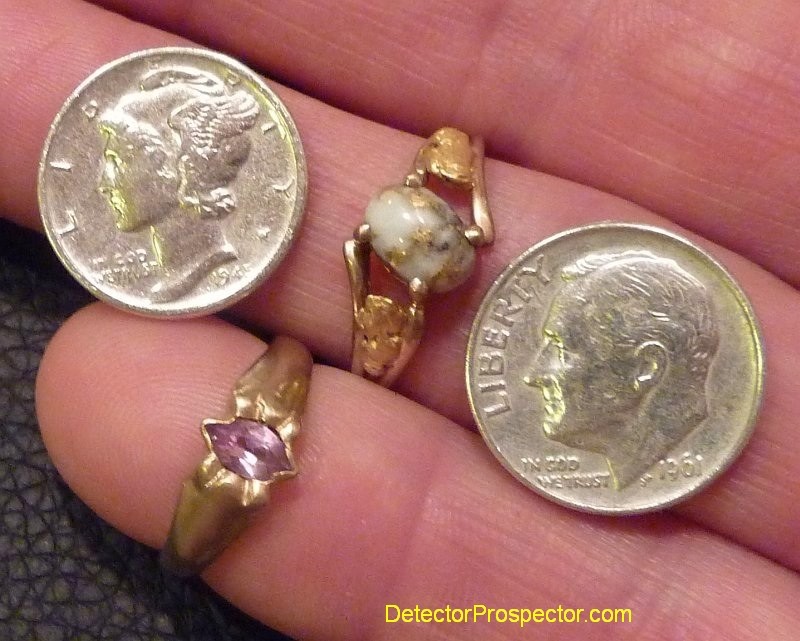
-
SINGAPORE (Reuters) - Gold climbed to its highest in nearly six weeks on Monday as a dip in equities lifted bullion's safe-haven appeal and improved investor confidence in the metal.
http://economictimes.indiatimes.com/markets/commodities/gold-hits-six-week-high-platinum-up-on-south-africa-strikes/articleshow/29104631.cms -
I am an avid metal detector user and I like always being at it. Just because there is no gold prospecting for me in a given time frame is no reason to not go metal detecting for gold. There are a lot more ways to find gold than prospecting, and so jewelry detecting is very high on my list. If you like finding a gold nugget, I do not see how you could not also be excited about digging up a gold ring.
Jewelry detecting and nugget detecting share many common traits, not least being the hunt for gold. Both also require a high tolerance for digging trash items, and both are best done with detectors made for the purpose. It just so happens that the detectors best used for nugget detecting are often the best to use for jewelry detecting.
In other words, a lot of you guys are already outfitted for this!
There are two general ways to hunt for jewelry - on dry land, or in and around water. Let's leave the dry land for another article and focus on the water detecting for now, since I am gearing up for a water hunt myself right now.
Almost any detector, with the remarkable exception of the most expensive one you can buy, comes with waterproof coils and can be submerged to the control box. Minelab PI stock coils are not warranted waterproof but only water resistant so it takes aftermarket coils to get them up to speed. But they are a poor choice for wading as there is probably no machine I would like dropping in the water less than a Minelab GPX 5000 with high amp battery attached.
Detectors that can be hip or chest mounted offer even more flexibility for wading applications. Few nugget detectors are fully submersible, but there are some, most notably the Garrett AT Gold, Infinium and ATX, all waterproof models. Jan 2019 note: see also Makro Gold Kruzer and Equinox 800.
Water detecting can be broken down into fresh water and salt water detecting. Fresh water detecting is pretty straight forward since fresh water is invisible to your detector. The tuning and operation of the detector is similar to what you do on dry land. All you have to worry about is keeping the electronics dry, and recovering targets underwater. Fresh water swimming holes are great for jewelry detecting, and there are many fresh water stream and river opportunities for gold prospectors. Any good gold prospecting detector also works well for freshwater beach hunting. The Garrett AT Gold has an obvious edge for being waterproof. The Tesoro Lobo gets special mention for being convertible to hip or chest mount.
In fresh water VLF detectors usually have an edge due to large amounts of trash often being present but PI detectors do have their place in fresh water detecting. The only way to know is to just give it a go and see how much trash there is. The nice thing about beaches though is the digging is easy compared to what nugget hunters often face.
Salt water adds a whole new dimension. Salt water is conductive, and therefore a hot metal detector can actually get a signal from salt water or wet salt sand. Many prospectors already know the issues surrounding salt and alkali flats. Detectors that are used in salt water need some way to tune out the salt signal. The problem is even worse on beaches that have mineral content, classic black sand beaches. A white beach composed of broken down coral and shells is no problem at all, but add volcanic material and the issues compound. Most prospectors would not be surprised to hear that pulse induction (PI) detectors have an edge in dealing with salt water scenarios.
There is an unsolvable conundrum however. The signal for salt water and small gold items, like post earrings or thin gold chains, actually overlaps. When you tune out the salt water, you tune out these items also. There is no solution to this problem with existing metal detectors because of the way they work. It is possible to find these items at the beach using a hot detector, like a White’s Goldmaster or Fisher Gold Bug 2, but you must be on bone dry sand. Any attempt to get near wet salt sand with these units will result in the sand acting like one giant target.
Most mid-frequency gold machines handle salt water beaches to varying degrees. They will generally have no problem until you get on sand currently seeing wave action or actually in the water. The higher the frequency, the less able to handle wet salt sand. The Fisher Gold Bug Pro at 19 kHz and Garrett AT Gold at 18 kHz are not happy on wet salt sand. They can be made to function but only by losing a lot of depth. The Tesoro Lobo has an alkali setting and White’s MX Sport a salt setting specifically designed to handle wet salt sand. In general though these detectors will all work better higher on the beach and have an edge on small rings, earrings, and chains that other beach hunting machines tend to miss.
The Minelab Eureka Gold and X-Terra 705 have low frequency options that make them well suited for beach hunting. The Eureka can be hip or chest mounted, but be aware the stock coil is another that Minelab does not warranty as waterproof.
The PI detectors fare better, the Garrett Infinium and new ATX having an edge again for being waterproof designs. The White’s TDI and Minelab series do well but must be kept dry. The TDI models except the TDI SL have an advantage in being convertible to hip or chest mount. Be aware that turning off or not using a ground balance system can often add extra depth with a PI on white sand beaches. The TDI and GPX 5000 can turn off the ground balance setting, and the factory default on the ATX before ground balancing offer possibilities on low mineral beaches. For 2019 see the new White's TDI BeachHunter.For serious salt water beach detecting hunters turn to detectors not normally used for prospecting. Ironically, this is because the general lack of sensitivity that makes prospectors eschew these models makes them ideal for salt water. Multi-frequency VLF detectors are not very good prospecting machines but they excel in salt water. Two detectors that vie neck and neck in the salt water VLF market are the Fisher CZ-21 and Minelab Excalibur. On the PI side the Garrett Sea Hunter, Tesoro Sand Shark and White’s Surf PI are the three popular models.
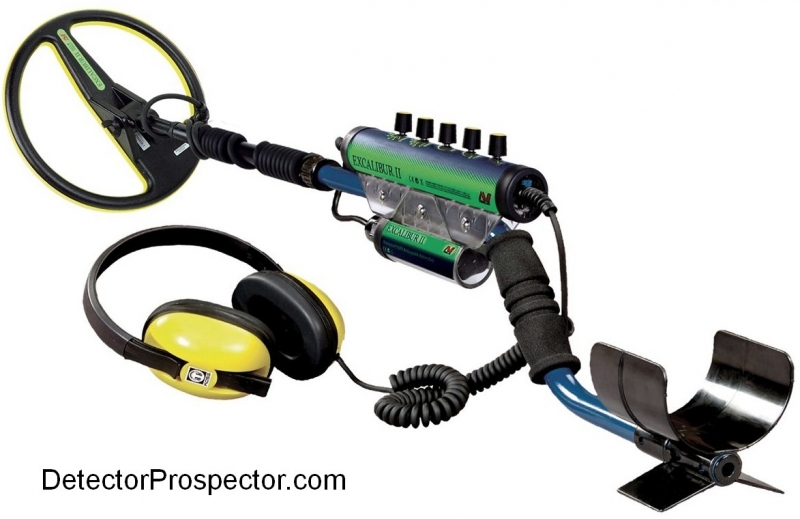
Minelab Excalibur II waterproof metal detectorThere are lots of options but if you ever want a specialized waterproof detector for both fresh and salt water and want to make a safe choice, get a Minelab Excalibur. It is probably the most popular water detector made and for good reason. It gets the job done with minimum fuss and will work well anywhere.
I am a PI guy myself however. I have used the Garrett Infinium extensively trying to deal with salt water and volcanic sand and hot rock conditions in Hawaii. I have had success with the model but it is difficult to deal with, suffering from an inability to ground balance into the salt range and susceptibility to EMI interference. Huge numbers of posts exist on how to try and get an Infinium to behave in salt water. The new ATX has taken steps to address these issues but the jury is out there yet. I will be giving the ATX a good go in Hawaii soon. My latest water detector is a White's Surf PI Dual Field to back up the ATX. I have had good luck in the past with the White's Surf PI models and recommend them for people interested in a waterproof beach PI. Again, a simple unit that gets the job done, and at a bargain price.
Where to hunt can fill a book, but really boils down to two things. The first is that the best finds will be made where people who wear quality jewelry congregate and engage in some kind of physical activity. On fresh water beaches where items get dropped is generally where they stay. The second item comes into play more often on salt water beaches. The waves and seasons concentrate items on layers, much like placer deposits. They sometimes bury the items too deep to find, and at other times expose them for easy recovery.
Beach watching can teach you a lot. There is the towel line, where people set up shop for the day. Lots of items get lost here. Then there are the places where people tend to play beach sports, like Frisbee or volleyball. Best of all, are areas in the water where people congregate, with areas where people can actually stand on the bottom being best.
Items dropped in sand obviously sink over time, but hard sand will resist this longest and keep the targets close to the surface longer. Extremely soft sand swallows items quickly and is not a good place to hunt. Areas where the sand tapers into a hard rock or coral bottom can be very good when the overlying sand is shallow enough to reach that hard layer with a detector.
Beach detecting is very popular, but beach hunters have on tremendous advantage over prospectors. The finds are being constantly replenished. There is no beach, no matter how heavily hunted, that does not have the potential for finds. The more activity there is the more items are lost in a given period of time. The finds made by beach hunters can rival the best made by prospectors, as not many gold nuggets come with diamonds attached.
I know for many prospectors it is about getting out into the middle of nowhere and away from the crowds. Beach hunting is not for everyone. But you can hunt early in the morning or even on rainy days, when people are few and far between. As more and more areas accessible to prospectors get hunted out, it is possible other places are near to you where gold may be easier to find. If you have a detector already you certainly have nothing to lose by giving it a go. Hopefully this post has at least made you consider the possibility. As always, volumes more information can be found just by Googling “beach detecting forum”.
Here is an example of a hunt at White's Surf PI Pro and Platinum Rings in Hawaii I got four platinum and three gold rings over a couple week period. One of the gold rings is white gold so it looks like only two gold. All fairly plain men's bands reflecting the rough surf area I was hunting. There is a picture of everything I dug at the link including the junk. All the platinum I have ever found was rings, and when platinum peaked at over $2000 an ounce I cashed in over two ounces of platinum.
Another very successful hunt was Detecting Gold in Hawaii with the Garrett Infinium Please note that unlike my prospecting outings I do not spend every hour of every day in Hawaii detecting. These finds are being made hunting on an average of two or three hours a day. I am not one to just sit around so detecting keeps me busy. And a good vacation can be paid for in finds or at least subsidized with some hard work and a little bit of luck.Waterproof VLF Detector Comparison Guide
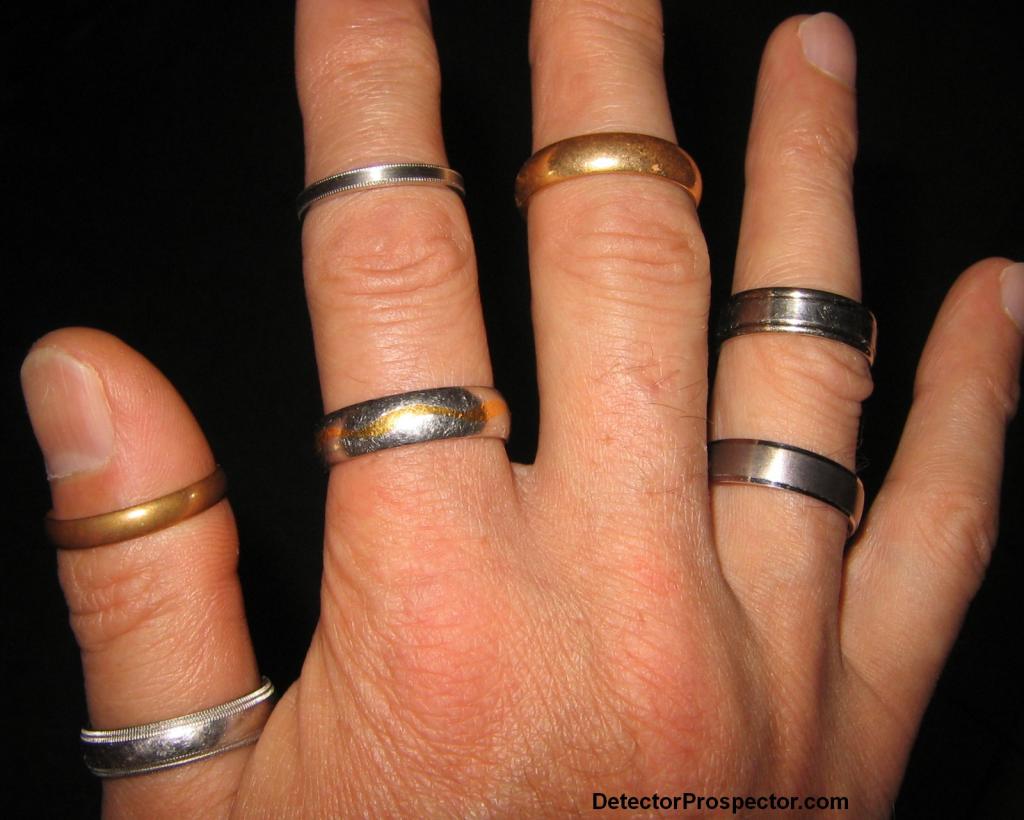
Some gold and platinum finds made by Steve in Hawaii -
Check out all the free articles at http://www.icmj.com/free_articles.php to see if the ICMJ Prospecting & Mining Journal is for you.
If you subscribe, do yourself a favor and get the magazine with online option or even online only. This gives you access not only to current issues online but many years of archived articles. A tremendous research resource if there ever was one, and old issues are constantly being added to the archives over time.
United States
1 Year Rates
Print $27.95
Print & Online $31.95
Online Only $27.95
2 Year Rates
Print $49.90
Print & Online $57.90
Online Only $49.90
3 Year Rates
Print $72.85
Print & Online $84.85
Online Only $72.85
International subscriptions available (hint: save bucks with online only) http://www.icmj.com/subscribe.php
-
Part of research is good record keeping.
I keep a diary that forms the basis for my stories at Steve's Mining Journal. Nothing as detailed as what you are doing though. I am more concerned about recording the memories than the gold statistics. One of my smarter moves as my memory for the past is not that good and the stories are fun to look back on now. But I do have a lot of notes about what was found when and where.
These days I am making a serious effort to use a GPS on my outings to map nugget finds. In time this can be valuable information if a pattern develops. Not to mention being able to find an old location years from now.
-
The disparity between Australia and other places is so extreme it really is as if people are detecting on different planets. It is obvious to me this is where a lot of arguments about detectors arise - people forgetting what is true in one place is not true everywhere, and what works best in one place does not work best in another. I have a long story that perfectly illustrates this but will save it for a new thread.I wonder if over there in your part of the world when the Pulse Detector hit the market did your grounds produce the amount of nuggets beneath the VLF’s range that seemed to occur in Australia, although if the ground was less mineralised maybe not such a deciding factor in favour of the Pulse machine.
Alaska is very low mineral ground by comparison to Australia. In fact, my old stomping grounds near Anchorage are on one of the largest continuous areas of slate, shale, and graywacke on earth. Extremely low iron content sedimentary or low grade metamorphic rock. A 6" gold dredge run all day will produce about a tablespoon of magnetic black sand. The nuggets average under a gram and the big ones weigh a quarter ounce. Nuggets over an ounce exist but are almost unheard of. I only found one right at an ounce in over 30 years of dredging and metal detecting south of Anchorage. And that was with a dredge. My largest nugget ever found detecting south of Anchorage weighed about 8 pennyweight. With a VLF.
I owned one of the largest detector dealerships in the country, selling over 500 metal detectors a year for decades. Over 99% of those detectors were VLFs. It is not because Alaskans lack money or are stupid. The fact is a PI not only offers no advantage it puts one at a disadvantage in many locations in Alaska. The detectors that produce are the Gold Bug 2 and White's Goldmaster series. They can be run at full gain and run well at that. Air test one of those detectors sometime, and that is the depth you generally get south of Anchorage. Time and again visitors from other places would show up with their high priced Minelabs looking to show the locals up and we just ran circles around them. In tailing piles, detectors like the White's MXT or a host of other mid-frequency detectors rule. PI detectors have had almost no impact in Alaska.
Now, it is a huge state, and there are areas that warrant a PI. My own Moore Creek mine was one of those. It had a couple nasty hot rocks buried in mild soil that gave VLF detectors fits. The vast majority of the gold found at Moore Creek was found with PI detectors. There are other examples. But those locations are not the rule in Alaska, they are the exception.
What I found interesting is people who have never used anything but a Minelab PI in bad ground often get almost religious about it, and refuse to believe what I have just relayed to you. I must be making it up.
That said, because of my use of the Minelabs at Moore Creek I have found more gold with a Minelab than any other person in Alaska I know of. Even in low mineral ground, a Minelab with an 18" mono is going to hit a larger nugget deeper than a VLF mainly because VLFs do got get any real bonus from larger coils. These days I target areas in Alaska where large nuggets lurk and tend to rely on my Minelab PI but I honestly must say most of the gold I find I still would have found with a good VLF. In much of Alaska it still really is just a matter of being first over the nugget, not having the deepest machine.
Better wrap this up, but in the western US there is a huge variation in ground from stuff to rival Australia to extreme low mineral ground. On average most is far less difficult than Australian ground and so many areas still produce well with VLF detectors but in the southwest in particular PI detectors are the real producers. Overall the western US is in between with Alaska and Australia as the extreme opposites.
Jonathan Porter told me once he thought I had an anti-Minelab bias, mostly relating no doubt to my reports from Ganes Creek, Alaska and my advice to people there not to us a PI. I can see how it would appear that way, though in later years the Minelab X-Terra 705 became very popular at Ganes Creek. Not a detector that normally gets raves from nugget hunters but it performs very well at Ganes Creek. Yet when I got to Australia to hunt with JP I think he saw that I love my GPX 5000. I think it is one of the finest pieces of metal detecting technology ever produced, and I feel almost privileged to own one and use it. It was a real joy seeing what it could do in the ground it was made for. But if I was headed south of Anchorage tomorrow I would grab my Gold Bug 2 or GMT.
-
Something to ponder. As far as I know the largest nugget ever found with a metal detector was the Hand of Faith, at 875 ounces of relatively solid gold. With a Garrett ADS VLF in 1980. The nature of desert eluvial deposits is the gold is usually near surface and more depth does not always mean more gold. All the Minelab PI detectors made ever since have yet to find a larger nugget in Australia. And nothing in modern times has come even remotely close to masses of gold found over 100 years ago. There is the idea that another foot of depth will result in a renewed gold rush but I do believe in many places people would be surprised to find the cream of the crop gone forever. Scrapes obviously prove that is not true of all locations but in areas where bedrock is within a foot or two all the depth in the world is not going to put the gold back.
Photo from http://en.wikipedia.org/wiki/Hand_of_Faith (Wikimedia Commons)
Actual Hand of Faith nugget on display at Golden Nugget Las Vegas -
Thanks Betty and Augie for joining the forum and responding here. You may want to watch for more questions. I for one do understand the difficulties of running such an operation. I appreciate the opportunity you are offering especially for those with no experience at all of remote Alaska. I always enjoyed my Alaska visitors at Moore Creek but it was the people who had never been to Alaska before and who never found gold before who were the most fun. Anything they found and everything they saw was new and exciting, truly life changing experiences for some. There is little that can match seeing a person find their first gold ever and knowing you helped make that happen. Good luck to you and your visitors in 2014. Maybe I will see you up there someday.
-
Thanks for posting that JP. I was thinking it is about time for a Minelab post, what with all the Garrett ATX posting lately. I like to spread it around to keep it even so you beat me to the punch. I have one nugget hunt so far in 2014 but no gold that day. The fact I was nugget detecting in January was a first for me regardless! Anyway, great find, and wishing you a pile more in 2014.
-
Ray brings up some valid points.
The AT Gold seems like a coin machine turned into a prospector via the addition of the all metal threshold based mode being added to the AT Pro. The AT gold in disc mode mirrors the AT Pro..
The gold bug Pro or G2 seems like a Gold machine turned into a dual purpose machine...
In other words both do dual duty as prospectors and coin jewelry through I.D. ability and full disc modes but they have different DNA.
I would say that hits the nail on the head. If you just lean one way or the other based on what the primary use of the machine will be it is hard to go wrong. I prefer my Gold Bug Pro to the AT Gold for prospecting simply because it focuses more on that task and I do not like changing coils on the AT Gold.
This will tell you how highly I think of the AT Pro and AT Gold however. The only reason I sold my AT Gold is because I have a CTX 3030 and for me they served the same purpose. Waterproof coin and jewelry detector. If I had to trade the CTX for something else it would be the AT Gold. The fact is I believe the AT Gold or AT Pro compare very favorably with the CTX 3030 and that says a lot. They are a couple super bang for the buck detectors.
I was using my Gold Bug Pro in wet brush the other day though and water dripping off the brush got a bit of moisture in the box and the display fogged up. The attractions of waterproof are obvious.
-
Garrett should hire you Paul!


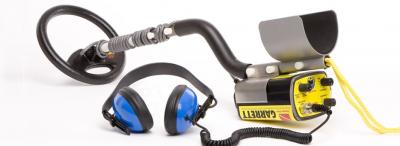
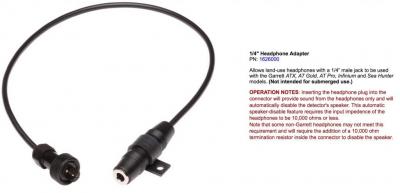
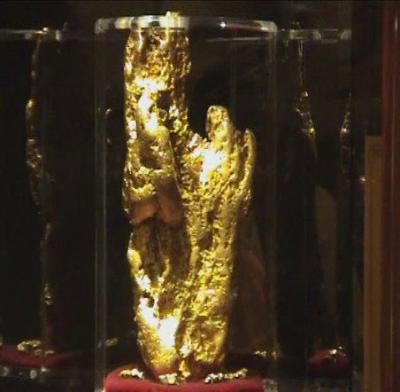
A Nice Day Out...
in Detector Prospector Forum
Posted
Good on you Ray, you are getting out often and scoring consistently. Thanks for the story and photos and especially the inspiration.